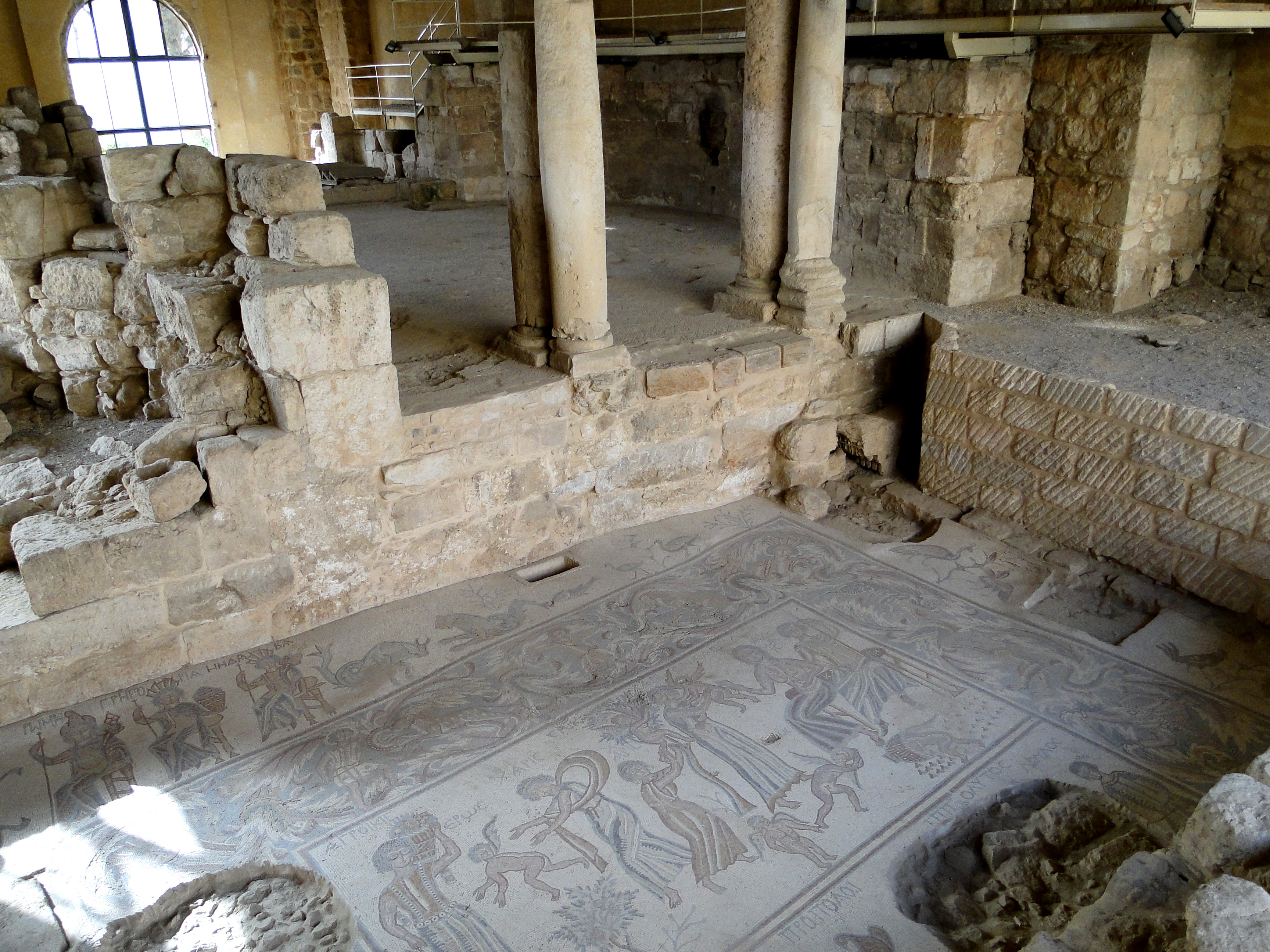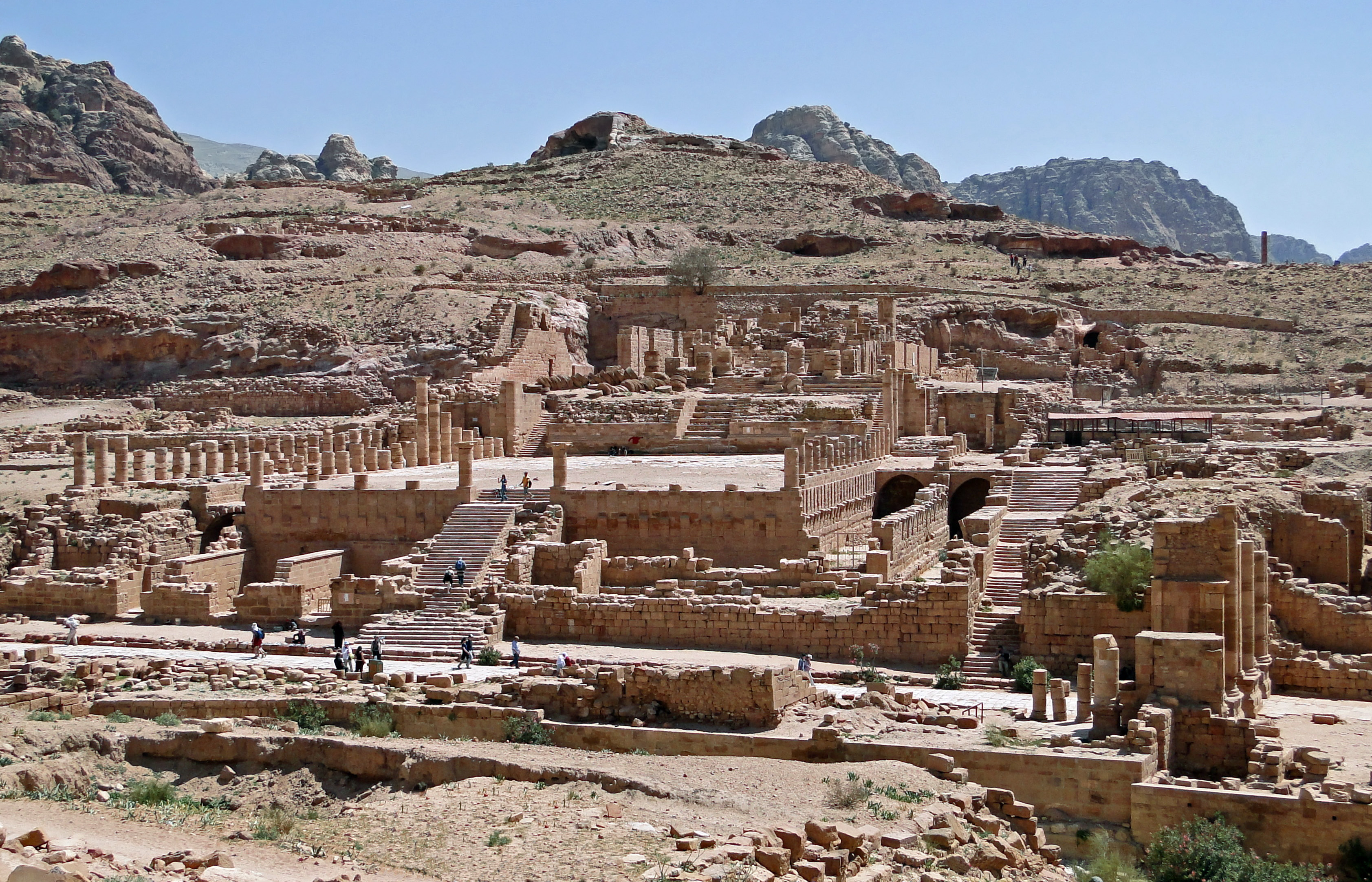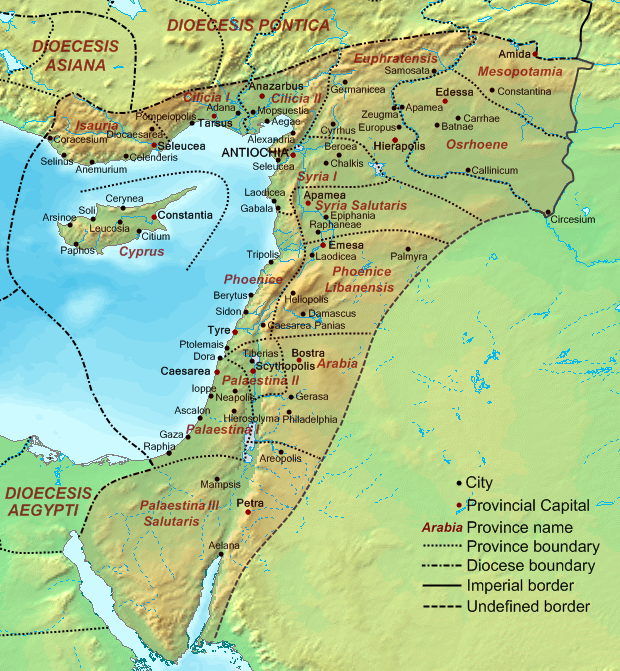|
Madaba
Madaba (; Biblical Hebrew: ''Mēḏəḇāʾ''; ) is the capital city of Madaba Governorate in central Jordan, with a population of about 60,000. It is best known for its Byzantine art, Byzantine and Umayyad mosaics, especially a large Byzantine-era mosaic map of the Holy Land. Madaba is located south-west of the capital Amman. History Madaba dates from the Middle Bronze Age. The town of Madaba was once a Moabite border city, mentioned in the Bible in Book of Numbers, Numbers 21:30 and Book of Joshua, Joshua 13:9. Control over the city changed back and forth between Kingdom of Israel (Samaria), Israel and Moab, as mentioned in the Mesha Stele. During its rule by the Roman Empire, Roman and Byzantine Empire, Byzantine empires from the 2nd to the 7th centuries, the city formed part of the Arabia Petraea, Provincia Arabia set up by the Roman Emperor Trajan to replace the Nabataean kingdom of Petra. The first evidence for a Christians, Christian community in the city, with ... [...More Info...] [...Related Items...] OR: [Wikipedia] [Google] [Baidu] |
Madaba Governorate
Madaba (Arabic مادبا) is one of the governorates of Jordan. It is located southwest of Amman, the capital of Jordan, and its capital is Madaba. The governorate is ranked 8th (of 12 governorates) by population and area. It is bordered by Balqa Governorate to the north, The Capital Governorate to the east, Karak Governorate to the south and the Dead Sea to the west. History The region has been occupied over the centuries by Moabites, Nabateans, Romans, and Arab Muslim empires. Madaba is known for its Byzantine and Umayyad mosaics, especially the Madaba Map, a large Byzantine-era mosaic map of Palestine and the Nile delta. Biblical and antiquity In the Bible, Mount Nebo is the site where Moses viewed the Land of Israel. Just west of Madaba city, Mount Nebo formed part of the Madaba Diocese in Byzantine times. The mosaics discovered in the village of Nebo, in the 'Uyun Musa valley and Ayn al-Kanisah carry inscriptions which date them to the times of the Bishops of Madaba fr ... [...More Info...] [...Related Items...] OR: [Wikipedia] [Google] [Baidu] |
Jordan
Jordan, officially the Hashemite Kingdom of Jordan, is a country in the Southern Levant region of West Asia. Jordan is bordered by Syria to the north, Iraq to the east, Saudi Arabia to the south, and Israel and the occupied Palestinian territories to the west. The Jordan River, flowing into the Dead Sea, is located along the country's western border within the Jordan Rift Valley. Jordan has a small coastline along the Red Sea in its southwest, separated by the Gulf of Aqaba from Egypt. Amman is the country's capital and List of cities in Jordan, largest city, as well as the List of largest cities in the Levant region by population, most populous city in the Levant. Inhabited by humans since the Paleolithic period, three kingdoms developed in Transjordan (region), Transjordan during the Iron Age: Ammon, Moab and Edom. In the third century BC, the Arab Nabataeans established Nabataean Kingdom, their kingdom centered in Petra. The Greco-Roman world, Greco-Roman period saw the ... [...More Info...] [...Related Items...] OR: [Wikipedia] [Google] [Baidu] |
Mosaics
A mosaic () is a pattern or image made of small regular or irregular pieces of colored stone, glass or ceramic, held in place by plaster/Mortar (masonry), mortar, and covering a surface. Mosaics are often used as floor and wall decoration, and were particularly popular in the Ancient Rome, Ancient Roman world. Mosaic today includes not just murals and pavements, but also artwork, hobby crafts, and industrial and construction forms. Mosaics have a long history, starting in Mesopotamia in the 3rd millennium BC. Pebble mosaics were made in Tiryns in Mycenean civilisation, Mycenean Greece; mosaics with patterns and pictures became widespread in classical times, both in Ancient Greece and Ancient Rome. Early Christian basilicas from the 4th century onwards were decorated with wall and ceiling mosaics. Mosaic art flourished in the Byzantine Empire from the 6th to the 15th centuries; that tradition was adopted by the Norman dynasty, Norman Kingdom of Sicily in the 12th century, by th ... [...More Info...] [...Related Items...] OR: [Wikipedia] [Google] [Baidu] |
Governorates Of Jordan
Jordan is divided into twelve historical regions (''muhafazah, almanatiq altaarikhia''), further subdivided into districts (''Liwa (Arabic), liwa''), and often into sub-districts (''qada (sub-district), qada''). 1994 reform In 1994, four new governorates were created as part of the administrative divisions system of the Ministry of Interior: Jerash Governorate, Jerash, Ajloun Governorate, Ajloun, Madaba Governorate, Madaba and Aqaba Governorate, Aqaba. Jerash Governorate and Ajloun Governorate were split from Irbid Governorate, Madaba Governorate was split from Amman Governorate and Aqaba Governorate was split from Ma'an Governorate. Geographical regions vs. metropolitan areas Geographically, the governorates of Jordan are located in one of three regions (aqalim): the North Region, Central Region and the South Region. The three geographical regions are not distributed by area or populations, but rather by geographical connectivity and distance among the population centres. The So ... [...More Info...] [...Related Items...] OR: [Wikipedia] [Google] [Baidu] |
Amman
Amman ( , ; , ) is the capital and the largest city of Jordan, and the country's economic, political, and cultural center. With a population of four million as of 2021, Amman is Jordan's primate city and is the largest city in the Levant region, the fifth-largest city in the Arab world, and the tenth-largest metropolitan area in the Middle East. The earliest evidence of settlement in Amman dates to the 8th millennium BC in 'Ain Ghazal, home to the world's oldest statues of the human form. During the Iron Age, the city was known as ''Rabat Aman'', the capital of the Ammonite Kingdom. In the 3rd century BC, the city was renamed ''Philadelphia'' and became one of the ten Greco-Roman cities of the Decapolis. Later, in the 7th century AD, the Rashidun Caliphate renamed the city Amman. Throughout most of the Islamic era, the city alternated between periods of devastation and periods of relative prosperity. Amman was largely abandoned during the Ottoman period from the 15 ... [...More Info...] [...Related Items...] OR: [Wikipedia] [Google] [Baidu] |
Petra
Petra (; "Rock"), originally known to its inhabitants as Raqmu (Nabataean Aramaic, Nabataean: or , *''Raqēmō''), is an ancient city and archaeological site in southern Jordan. Famous for its rock-cut architecture and water conduit systems, Petra is also called the "Rose City" because of the colour of the sandstone from which it is carved. The city is one of the New 7 Wonders of the World and a UNESCO World Heritage Site. The area around Petra has been inhabited from as early as 7000 BC, and was settled by the Nabataeans, a nomadic Arab people, in the 4th century BC. Petra would later become the capital city of the Nabataean Kingdom in the second century BC. The Nabataeans invested in Petra's proximity to the incense trade routes by establishing it as a major regional trading hub, which gained them considerable revenue. Unlike their enemies, the Nabataeans were accustomed to living in the barren deserts and thus were able to defend their kingdom. They were particularly sk ... [...More Info...] [...Related Items...] OR: [Wikipedia] [Google] [Baidu] |
Moab
Moab () was an ancient Levant, Levantine kingdom whose territory is today located in southern Jordan. The land is mountainous and lies alongside much of the eastern shore of the Dead Sea. The existence of the Kingdom of Moab is attested to by numerous archaeological findings, most notably the Mesha Stele, which describes the Moabite victory over an unnamed son of Kings of Israel and Judah, King Omri of Kingdom of Israel (Samaria), Israel, an episode also noted in Books of Kings, 2 Kings 3. The Moabite capital was Dibon. According to the Hebrew Bible, Moab was often in conflict with its Israelites, Israelite neighbours to the west. Etymology The etymology of the word Moab is uncertain. The earliest Biblical gloss, gloss is found in the Koine Greek Septuagint () which explains the name, in obvious allusion to the account of Moab's parentage, as ἐκ τοῦ πατρός μου ("from my father"). Other etymologies which have been proposed regard it as a corruption of "seed of a ... [...More Info...] [...Related Items...] OR: [Wikipedia] [Google] [Baidu] |
Arabia Petraea
Arabia Petraea or Petrea, also known as Rome's Arabian Province or simply Arabia, was a frontier Roman province, province of the Roman Empire beginning in the 2nd century. It consisted of the former Nabataean Kingdom in the southern Levant, the Sinai Peninsula, and the northwestern Arabian Peninsula. Its capital was Petra. It was bordered on the north by Syria (Roman province), Syria, on the west by Judea (Roman province), Judaea (renamed Syria Palaestina in AD 135) and Roman Egypt, Egypt, and on the south and east by the rest of Arabia, known as Arabia Deserta and Arabia Felix. The territory was annexed by Emperor Trajan, like many other eastern frontier provinces of the Roman Empire, but held onto, unlike Roman Armenia, Armenia, Mesopotamia (Roman province), Mesopotamia and Assyria (Roman province), Assyria, well after Trajan's rule, its desert frontier being called the Limes Arabicus. It produced the Emperor Philip the Arab, Philippus, who was born around 204. As a frontier ... [...More Info...] [...Related Items...] OR: [Wikipedia] [Google] [Baidu] |
Byzantine Art
Byzantine art comprises the body of artistic products of the Eastern Roman Empire, as well as the nations and states that inherited culturally from the empire. Though the empire itself emerged from the decline of Rome, decline of western Rome and lasted until the Fall of Constantinople in 1453, the start date of the Byzantine period is rather clearer in art history than in political history, if still imprecise. Many Eastern Orthodox states in Eastern Europe, as well as to some degree the Islamic states of the eastern Mediterranean, preserved many aspects of the empire's culture and art for centuries afterward. A number of contemporary states with the Eastern Roman (Byzantine) Empire were culturally influenced by it without actually being part of it (the "Byzantine commonwealth"). These included Kievan Rus', as well as some non-Orthodox states like the Republic of Venice, which separated from the Byzantine Empire in the 10th century, and the Norman-Arab-Byzantine culture, Kingdom o ... [...More Info...] [...Related Items...] OR: [Wikipedia] [Google] [Baidu] |
Umayyad
The Umayyad Caliphate or Umayyad Empire (, ; ) was the second caliphate established after the death of the Islamic prophet Muhammad and was ruled by the Umayyad dynasty. Uthman ibn Affan, the third of the Rashidun caliphs, was also a member of the clan. The family established dynastic, hereditary rule with Mu'awiya I, the long-time governor of Greater Syria, who became caliph after the end of the First Fitna in 661. After Mu'awiya's death in 680, conflicts over the succession resulted in the Second Fitna, and power eventually fell to Marwan I, from another branch of the clan. Syria remained the Umayyads' main power base thereafter, with Damascus as their capital. The Umayyads continued the Muslim conquests, conquering Ifriqiya, Transoxiana, Sind, the Maghreb and Hispania ( al-Andalus). At its greatest extent (661–750), the Umayyad Caliphate covered , making it one of the largest empires in history in terms of area. The dynasty was toppled by the Abbasids in 750. S ... [...More Info...] [...Related Items...] OR: [Wikipedia] [Google] [Baidu] |
Bilad Al-Sham
Bilad al-Sham (), often referred to as Islamic Syria or simply Syria in English-language sources, was a province of the Rashidun, Umayyad, Abbasid, and Fatimid caliphates. It roughly corresponded with the Byzantine Diocese of the East, conquered by the Muslims in 634–647. Under the Umayyads (661–750), Bilad al-Sham was the metropolitan province of the Caliphate and different localities throughout the province served as the seats of the Umayyad caliphs and princes. Bilad al-Sham was first organized into the four '' ajnad'' (military districts; singular ''jund'') of Dimashq (Damascus), Hims (Homs), al-Urdunn (Jordan), and Filastin (Palestine), between 637 and 640 by Caliph Umar following the Muslim conquest. The ''jund'' of Qinnasrin was created out of the northern part of Hims by caliphs Mu'awiya I () or Yazid I (). The Jazira (Upper Mesopotamia) was made an independent province from the Mesopotamian part of Qinnasrin by Caliph Abd al-Malik in 692. In 786, the ''j ... [...More Info...] [...Related Items...] OR: [Wikipedia] [Google] [Baidu] |





